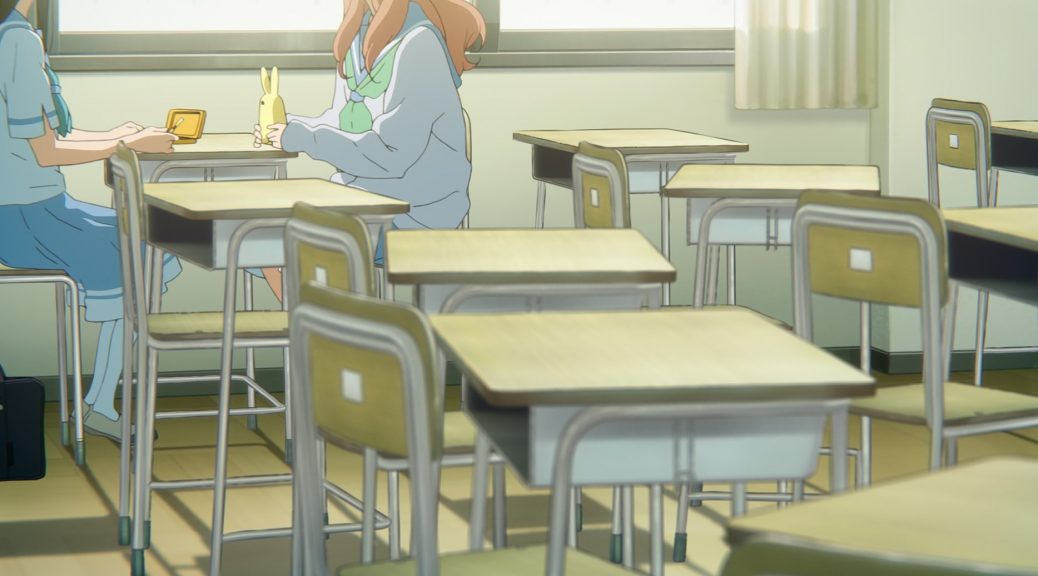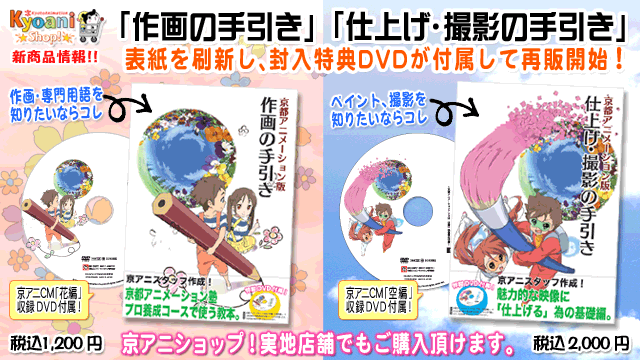
The KyoAni School: Decades Of Commitment To Training Anime’s Next Generations
While many fans of Kyoto Animation have heard about the KyoAni School, it’s very few who realize their initiative to train new generations of anime creators has been in place for longer than the studio has actually been creating their own titles. This is the story of a well-known but never fully appreciated aspect of KyoAni’s unique strategy—essential to their success in the past, and even more so in the future.
When it comes to the positive characteristics that make Kyoto Animation such a unique existence in the anime industry, the KyoAni School appears to be one of the studio’s better-known initiatives. And yet, its history isn’t exactly well documented—even in the Japanese side of things—and without that context, most fans have yet to realize how integral it is to the studio. We’ve mentioned before that in some ways, training new generations of creators is more of an ultimate goal for KyoAni than making their own anime. That might have sounded like an exaggeration… until you realize that they’ve been dedicating themselves to that for longer than there have been KyoAni titles.
The year 2000 brought many changes, for no real reason other than everyone’s predisposition to love big round numbers. That extra motivation led to new initiatives we’ve already talked about, but most importantly, to the establishment of the KyoAni School. Two major programs were included under that umbrella: the professional training course that has kept evolving to this day, and a set of scheduled art classes open to essentially everyone. Although we’ll focus on the former, the latter’s existence for 10 years—it remained operative until December 2010—is still worth noting. With no entry fees at an affordable price of 8,500JPY for 6 lessons, it was the equivalent of a gym where Olympians would swing by to teach you.

At the time of its inception, the Kyoto Animation Pro Training Course was already quite similar to its modern equivalent. At its core, it has always been a couple of overlapping yearly courses starting in April and October, where the studio’s actual staff would pass down their practical knowledge—focusing not just on the techniques but the attitude you need to balance efficiency with artistic fulfillment and enjoyment. As they graduate, the students are also offered a chance to take a test to join the studio as full-time employees; in the case of people who attended the April course, due to the way fiscal years work in Japan, that can mean starting the job the week after wrapping up the course. This strategy has done wonders for them, though it’s worth noting that for as positive as their alumni sound when sharing their experiences, most also agree that the course made them understand that a career in animation isn’t worth pursuing unless you enjoy the creative process.
Back then, the course was split into three programs: one for aspiring directors, one for animators, and one for background artists. Since the location of the classes was and still is KyoAni’s actual anime studio, namely a few desks at Studio 2 dedicated to the school, the places available for each course were limited from a couple to a handful. The lessons were held only during Friday afternoons and all day throughout Saturdays, which is quite the contrast with their current five days a week deal. A less ambitious effort that gradually grew in scope and efficacy as it proved its worth and they figured out exactly what the studio needed.
By the time Kyoto Animation began producing its first fully-fledged titles in 2003, the pro training course had just made its first major change: dropping the director’s program and gradually incorporating the key aspects of that syllabus into the animator program instead. Although that was partly due to technological advancements in the industry as a whole—no need to teach youngsters how to deal with cels if they’re never going to encounter them—it was KyoAni’s own evolution that dictated their steps.
One of the earlier notable success stories in the KyoAni School was Seiichi Akitake: a student in 2003 and member of the studio ever since then, animation director and prop designer with an eye for detail, but with the liveliness to his animation that you need to succeed at the studio. Nowadays he’s an instructor at the school himself.
For the longest time now, every director at the studio has been an animator. They’ve developed a house style that’s built upon acting: not just the nuanced movement of their characters, but also how every single shot is framed so that even their static postures reflect their state of mind. Although there are many valid paths to becoming an anime director, KyoAni’s specific needs make artists with an animation background the most fitting candidates to lead their creative efforts. Having established that as their way to go, the Pro Training Course adapted to it, and even the studio’s regular recruitment campaigns began asking for artists with aspirations of becoming a director to apply as animators to the company.
There are many specific examples that highlight the strong technical fundamentals that KyoAni School alumni have. Tomoyo Kamoi, who graduated in the 11th generation at the school and then spent 6 years at the studio before going freelance, left all her peers on Doukyuusei speechless; how could an animator they’d barely heard about be so ahead of the pack, on such a stacked production to boot? The same thing applies to Naoya Nakayama: graduated in the 19th batch, spent half a decade at the studio after joining them in 2012, and the second he became a freelance agent everyone realized he had the skill to be treated as the ultimate weapon for productions like Kaguya-sama. With that in mind, though, it’s important to understand that the school’s success has been training ideal KyoAni creators rather than professionals in general, which shows in the number of alumni who are gaining important roles at the studio. Having a well-defined identity, and being able to gear their training towards that even for young artists who haven’t joined the company has been key to the KyoAni School’s success—and thus, to the studio as a whole.
Other notable alumni include Shinpei Sawa: an action expert who followed his mentors Taiichi Ishidate and Noriyuki Kitanohara closer than anyone else, eventually becoming an instructor and the latest staff member to be promoted to the episode director position at the studio.
Slowly but surely, KyoAni’s Pro Training Course grew until its current state. Elective classes were added in 2007, then further expanded in 2009. That year also marked a slight increase in the number of students they’d accept at a time, most notably going up to 10 new animators per batch. They strongly reinforced their lineup of instructors with a handful of studio legends like Yoshiji Kigami and Yasuhiro Takemoto; while it was always studio veterans who did the teaching, adding their most important creators was a showcase of commitment to the KyoAni School. In 2018, they also removed the matriculation fees to make it more accessible and began offering two-year programs for up-and-coming artists who really wanted to prepare themselves for professional work… though that’s when tragedy hit the studio and they had to scrap the latter idea, likely because KyoAni’s worries become more immediate.
The brutal arson attack on Kyoto Animation exactly one year ago was a turning point for everything at the studio. Had they decided on scaling down the KyoAni School’s efforts, I doubt anyone would have blamed them, as they had more than enough on their plate as it was. But all their responses to this unprecedented crisis have been uncompromising with the studio’s ideals. After a short postponement of the recruitment campaign that was meant to happen right after the attack, they doubled down on the importance of training: their 29th batch of students was going to disregard the usual limitations and accept as many individuals as they saw fit, and they would begin training animation students in their Osaka location as well. And that’s why, in spite of that and the Covid-19 crisis forcing them to handle a couple months’ worth of lessons remotely, we’re currently in the midst of the KyoAni School’s most ambitious effort. It was a key piece to their success, and it’ll once again be in their rebuilding.

Anime studios doing their own training courses isn’t unheard of. Just in recent years, we’ve seen Sunrise rebranding their Saplings School into a larger Sunrise Animation School, and P.A. Works making their influences obvious by starting their own course that follows the same naming pattern as KyoAni’s. There are even examples of such initiatives that have trained exceptional artists; look no further than the Toei Animation Institute, which offered courses attended by the likes of Rie Matsumoto and Yuki Hayashi. But these cases also highlight what makes the KyoAni School one of a kind: the Toei Animation Institute actually ceased operations in 2011, while the rest are much newer programs, have way less of an impact on the studio’s, or both.
By knowing the kind of qualities they seek in artists, having experts in the field willing to dedicate their time to youngsters who aren’t even part of the studio, and knowing how to integrate that program into KyoAni’s overall mentorship mechanisms, the KyoAni School has been an incomparable success. In an industry where people bounce all over the place constantly, the average employee stays at KyoAni for a decade—a number that gradually keeps increasing, without even factoring in the time many of them spent on their training course beforehand. It’s a tightly-knit family, a workplace where people are expected to spend their careers there if they want, and an exceptional anime-producing pipeline where everyone knows how to work alongside their peers. And none of those qualities can be understood without the KyoAni School.

Support us on Patreon to help us reach our new goal to sustain the animation archive at Sakugabooru, SakugaSakuga (作画): Technically drawing pictures but more specifically animation. Western fans have long since appropriated the word to refer to instances of particularly good animation, in the same way that a subset of Japanese fans do. Pretty integral to our sites' brand. Video on Youtube, as well as this SakugaSakuga (作画): Technically drawing pictures but more specifically animation. Western fans have long since appropriated the word to refer to instances of particularly good animation, in the same way that a subset of Japanese fans do. Pretty integral to our sites' brand. Blog. Thanks to everyone who’s helped out so far!
Do you have any guidance on how to find those training books, I almost tracked them down a few months ago! Thanks for doing all these Kyoani write ups, I’m sure they’ve gotten more painful to compose but I can say at least personally they’ve had a tremendous impact on how I engage with animation.
They’re sold at the KyoAniShop – the animation one is currently in stock, but the painting/compositing one isn’t. It’s been around for long enough that it pops up in stores that ship internationally every now and then too, like Amazon JP and Mandarake.
(And yeah: not easy, but worth it.)
I’ll keep my eyes peeled, thanks for the response!
is this thing even still a thing after the fire